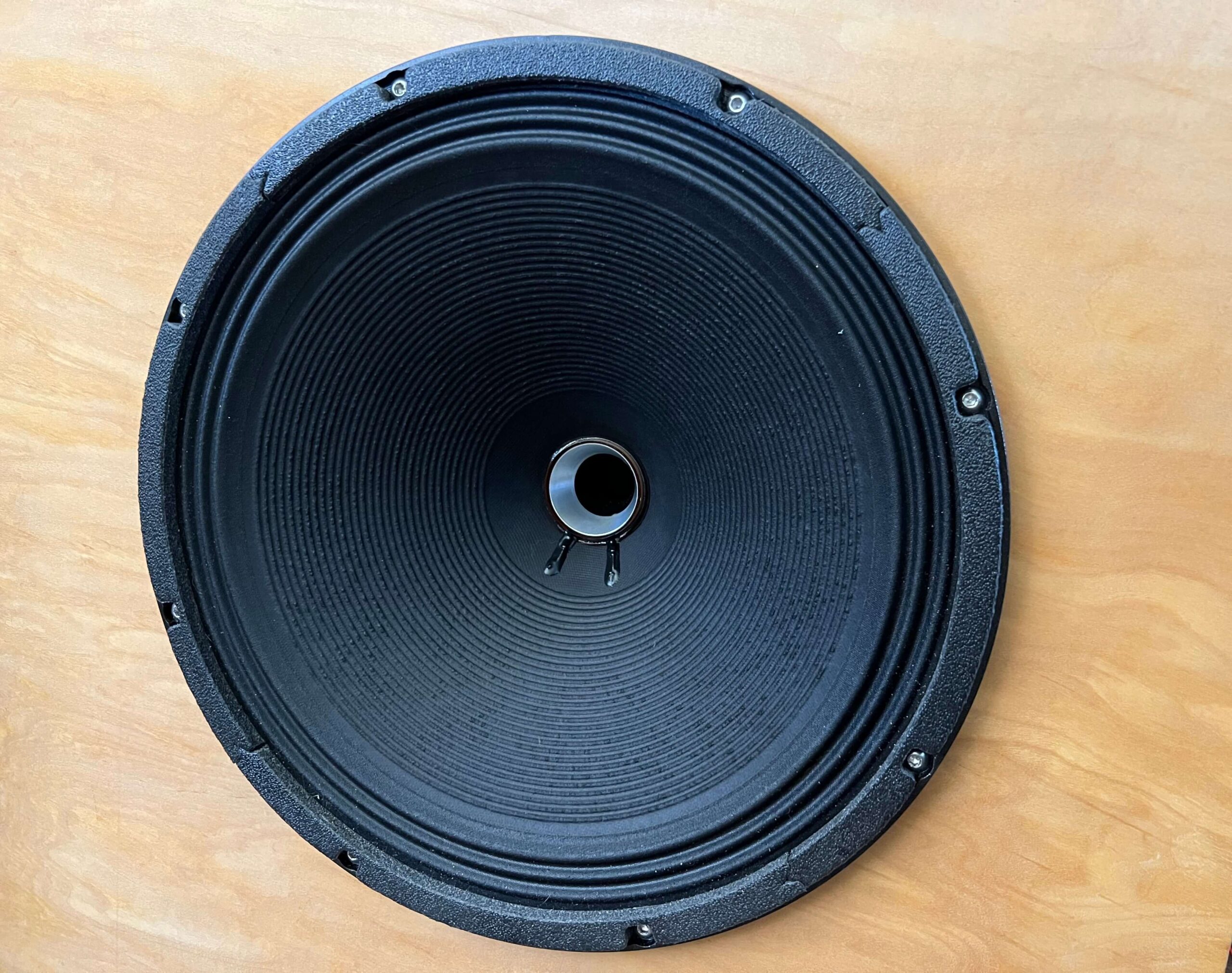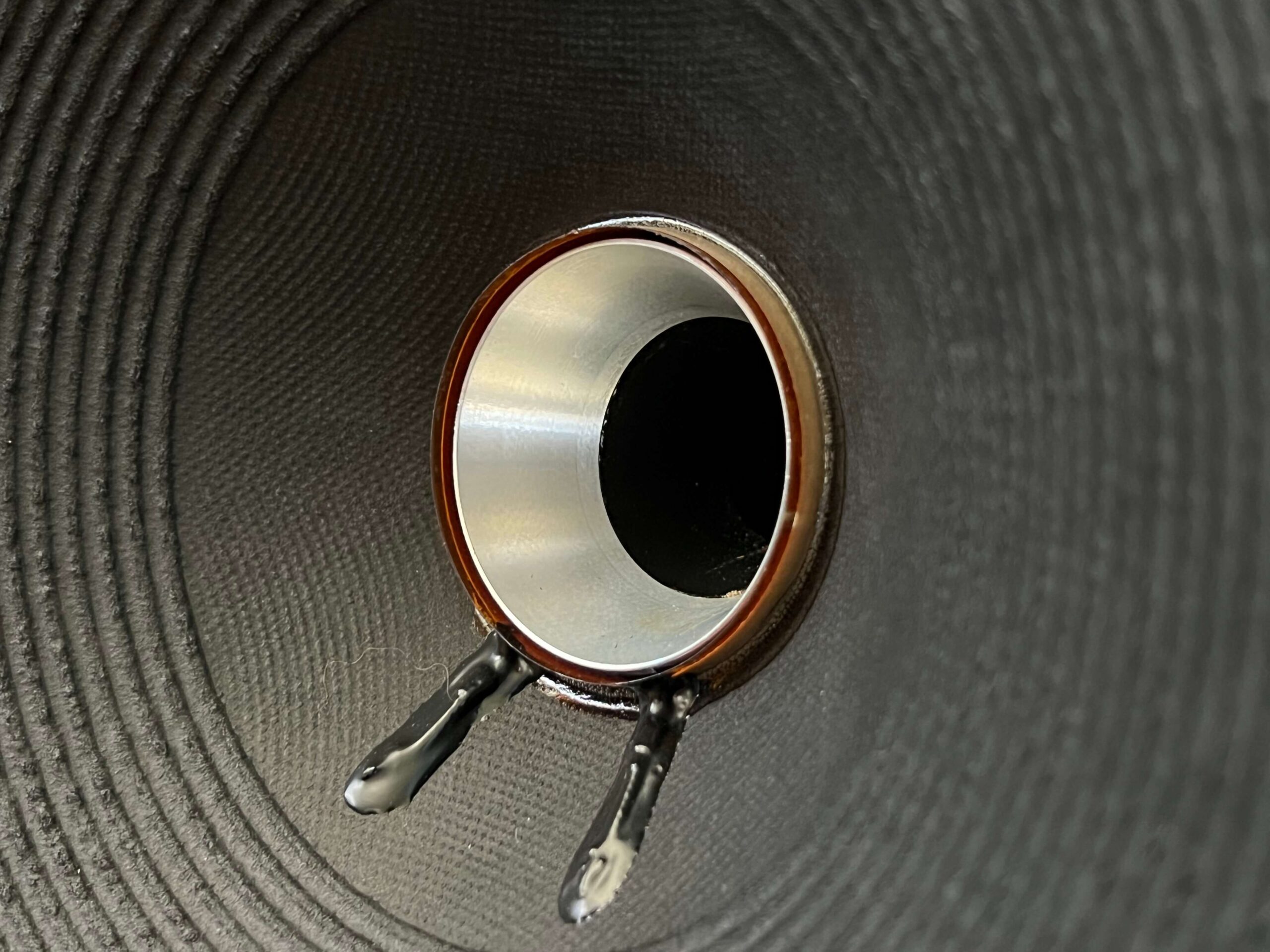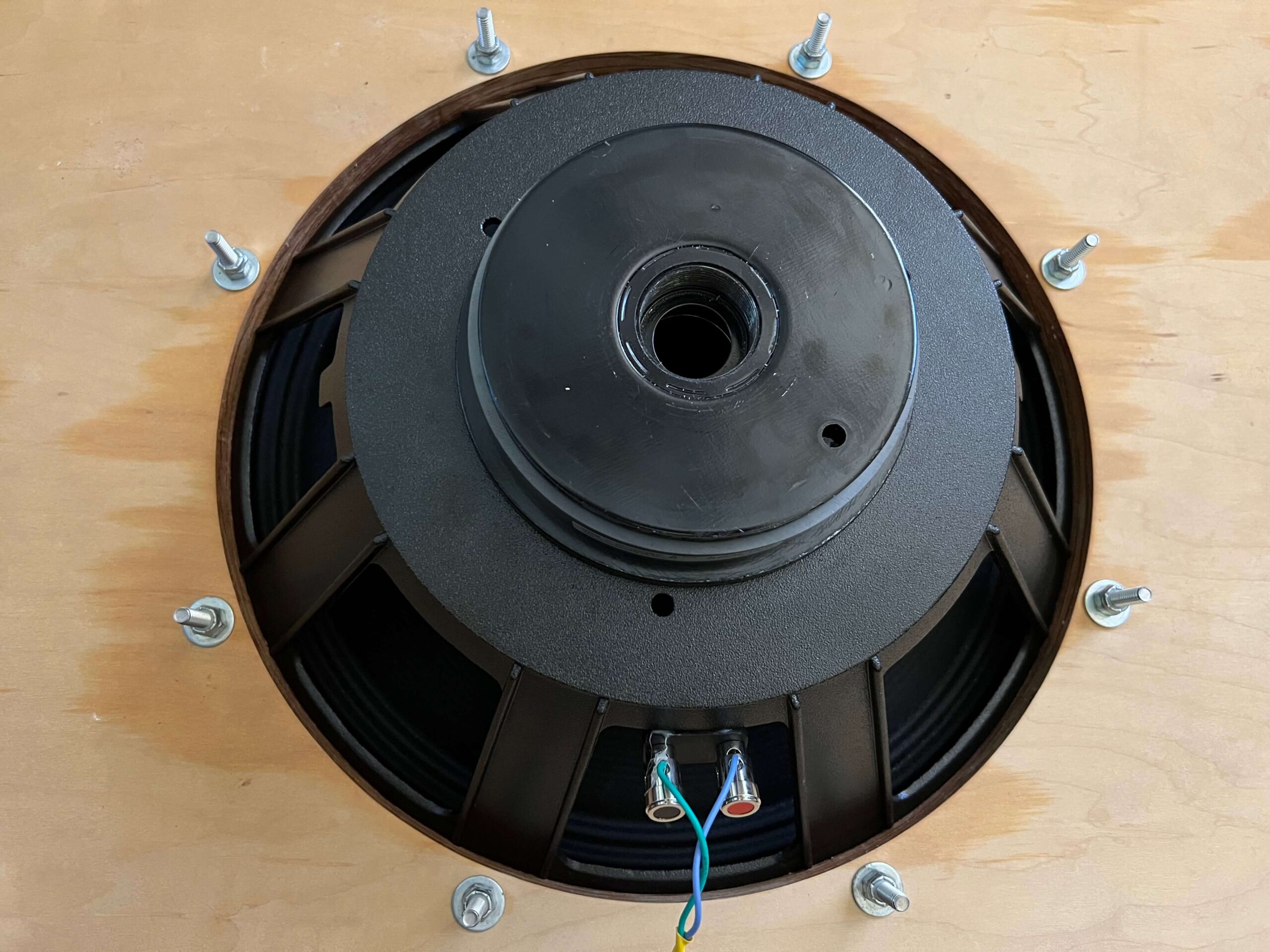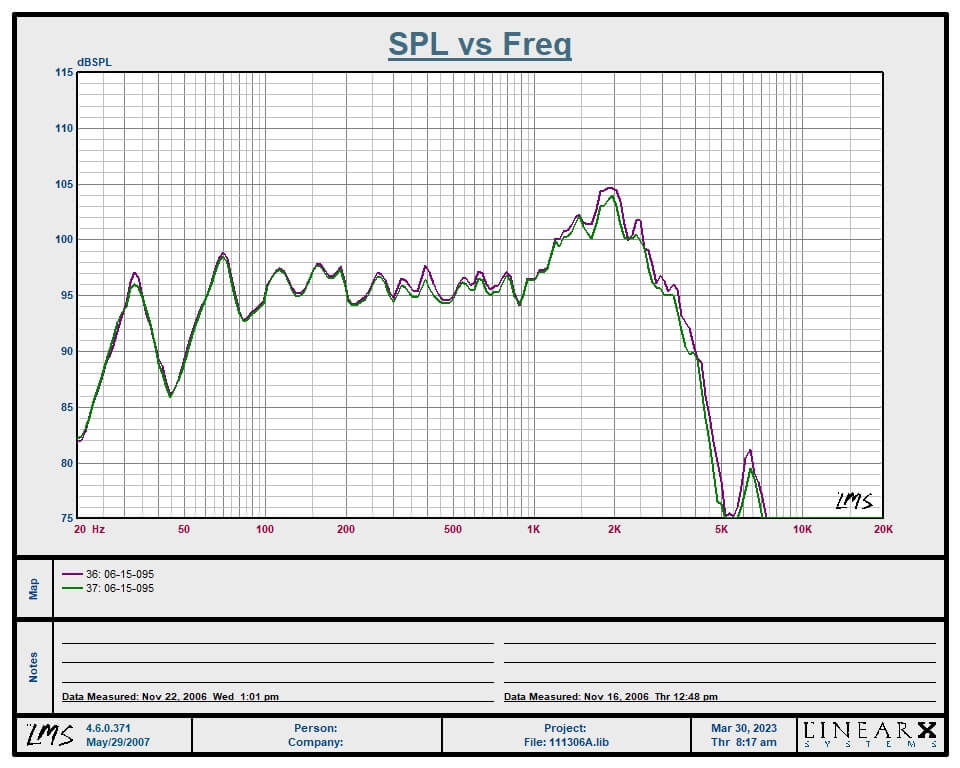HA15.1
798.00
Coaxial Woofer Single
This is a 15″ Woofer purpose-made for open baffle applications, with a tapped center pole piece with exponential horn flare accommodating the tweeter of the user’s choice. This 15″ driver with an exponentially flared pole piece can accommodate a 1 3/8-18 threaded 1″ compression horn driver. Any 1″ screw-in compression horn driver will fit on the back of the driver. We recommend the Eminence ASD1001 1″ driver that is also available from us. We also have modified versions for a true dipole radiation pattern with the tweeter, and better horn loading to smooth out its response.
We recommend this driver to be rear mounted and with a 9″ whole it gives enough higher attenuation to where it measures flat to the point you will not need a choke to blend it with a tweeter. With most 1″ tweeters a 3.3uF capacitor is all that is needed.
The driver breaks in with playtime in about 10hrs of play time at moderate volume levels. You may notice a little better instrument separation, clearer midrange including more texture to instruments, and a little deeper bass response.
15″ diameter Purpose-built driver for do-it-yourself open baffle designs.
Horn-shaped pole piece, accommodating a 1 3/8″ thread for 1″ compression drivers.
Cast aluminum frame.
97dbs w/m sensitivity
Qts 0.6
Cloth surround
Lightweight paper cone
It can be front or rear-mounted, foam gaskets for front and rear mounting.
8 ohms nominal impedance
Spring-loaded clips for wire insertion no special connector needed.
Maximum recommended power 150w program.
Made in the USA.
 This was the response of a newly made driver before break-in, provided by the manufacturer. For whatever reason it is nowhere near as crazy in both how much it varies in its response, and how many peaks. In-room responses aren’t super accurate below 250hz, but above that they aren’t too bad. Below is an in-room response of the LDA-HA15.1 driver, it starts sloping around 2k with a 1.5mH choke.
This was the response of a newly made driver before break-in, provided by the manufacturer. For whatever reason it is nowhere near as crazy in both how much it varies in its response, and how many peaks. In-room responses aren’t super accurate below 250hz, but above that they aren’t too bad. Below is an in-room response of the LDA-HA15.1 driver, it starts sloping around 2k with a 1.5mH choke.
Although all of those peaks exist with the driver, real-world measurements are much different. The 2k peak rather than being +20dbs, is more like +10dbs, and in room at the listening position less. Also, the two bumps in the bass region are higher in frequency and not as extreme, I think the in-room plots tell the story. The amplifier you use often determines how bumpy the response is because each amplifier has a different damping factor. I use a single-ended tube amplifier which has little to no damping factor and as such is about as wild as you are going to get. So consider the following measurements in-room a bit of a worst-case scenario.
Below is just the woofer with a 1.5mH choke to tame the 2k Hz bump. Its response is basically from 50hz to 5k Hz.

Below are measurements of both drivers to determine the ideal crossover point. here a large crossover cap was used to look at the tweeters’ plot.

Combination of both drivers with minimal 1st order crossover. This measurement was taken at a listening position in room with a subwoofer, hence the low end extension to below 30hz.

Measurement after L pad adjusted to lower treble range. With the tweeter adjusted, and a 1.5mh choke on the woofer the response looks like this in room. Depending on the size and dimensions of your room your response may vary to a degree.

We are sharing the above in room measurements to show that there is a great deal of flexibility in combining both drivers. The last two measurements were made with a subwoofer in the mix resulting in more bass extension -3dbs down point usually around 50hz unless you use a choke on the woofer, which extends it further. Also using a 10″ hole with a round over acts like a 1.5mH choke, and lowers the Fs of the driver as low as 35hz. The more the drivers are broken in the lower their Fs becomes, typically out of the box their Fs is 42hz.
We will be releasing an Experimentor’s Crossover soon whereby you can use different capacitor and choke values. The crossover will come with one capacitor and choke to get you started and include a Lpad for tweeter volume control.




